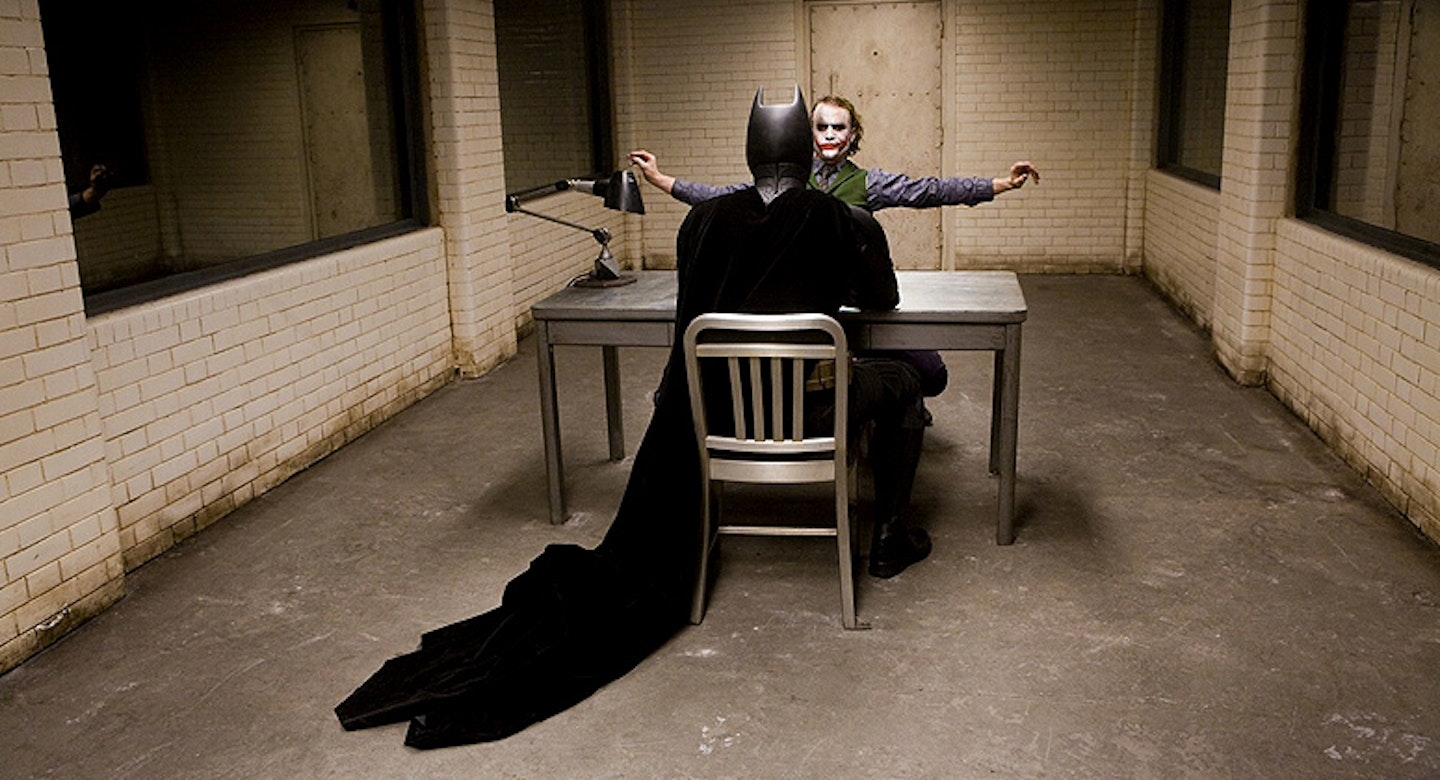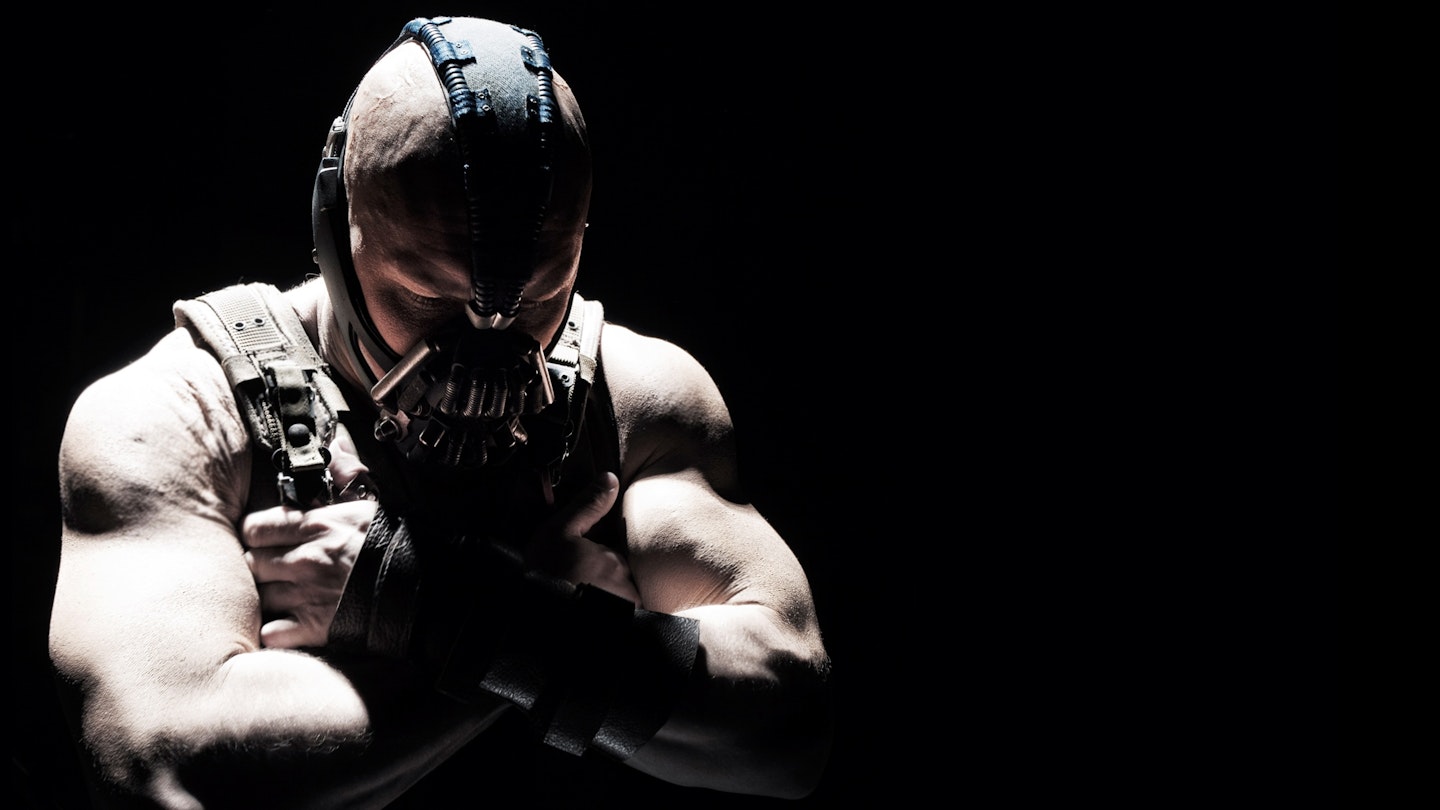The Director of Photography is a very important person on a film set, working hand-in-glove with the director to establish the look of the film and turn it from a muddy mess into a work of art. On all three of Christopher Nolan’s Bat-films, that cinematographer has been Wally Pfister, working with the director to bring Gotham to life and lift Batman to new heights. Here, he talks us through the trilogy in his own words and tells us a little about his approach to The Dark Knight Rises...
"When Chris first approached me and said he wanted to do a Batman film, I was kind of surprised, because we’d just finished Memento and Insomnia and I’d assumed we were just going to continue down the track of those sorts of dark detective stories. Little did I know that that was exactly what Chris had in mind for Batman! Of course, I was initially just like ‘Really? A superhero movie?’ To be honest I wasn’t really that excited about it. I do grounded filmmaking; I’m not really a big superhero fan. But at the same time, Chris and I have a lot in common in that sense, we both like Kubrick and what-have-you, so I knew that whatever it was we were taking on, he had seen something in that material that would allow us to continue in the vein that… we were doing what we were doing. That certainly became the case. By the time I read the screenplay in the fall of, I guess, 2003, I was blown away by what Chris had put together. The size of the project and the budget was a little intimidating, but we started putting the cast together, and we got Gary Oldman, and Freeman, and obviously Christian, and it was incredibly exciting."
"What got me through was the approach that I had taken on Chris’ other films, which was to keep it very much grounded in reality, and keep the lighting very natural. My approach was to go into real kind of urban environments and look at the textures and lights, in places like Chicago and London, and try to get inspiration for what would be the look of the film. I was in Chicago looking at the orange from the sodium lights, and it looked real and gritty, so I started doing tests in those sorts of environments to kind of capture that look. I carried that throughout all the exterior work, and the look of the film began to evolve from there."
"On that first film we were faced with some major action set-pieces. On Insomnia we had done a bit of a shoot-out, but nothing on the level of Batman Begins obviously. Really, one of the fascinating things was that Chris told the studio that he wanted to direct all the action stuff himself, and not have a second unit. That seems insane, but actually, Chris and I both feel that it also feels insane to us to have somebody else do those scenes. That was exactly what he said to the studio – why would I want to direct an action film where I hire another director to direct the action? It made all the sense in the world to me. Having worked on other pictures that have hired second unit directors, with all due respect to them, half the time all they’re delivering is what the first-unit director has asked them for. And sometimes if the director doesn’t approve then there are re-shoots, and it wastes a ton of money. Chris was spot-on with his understanding of how dysfunctional that system can be, so that was a big part of his philosophy to do it himself. I loved the idea."
"What we didn’t even realise was what a wonderful balance it creates when you’re shooting big set-pieces with very little dialogue and all the fun boy’s toys stuff one week, and then the very next week you’re doing sensitive dialogue scenes. It actually creates a kind of brilliant yin and yang feeling in the entire team. It’s a great balance for the actors and the director and the entire team. *Very *few directors do that, even now. He was able to prove to the studio within the first week of shooting Batman Begins that we were not only able to shoot our own action stuff, but we were able to stay on schedule, and in the end, in the great Nolan tradition, we were under-schedule and under budget. I’ve absolutely learned on the job working with Chris, even though I came in with a lot more experience than him. I had spent many years doing kind of straight-to-video crap movies, so I had the mechanics down, and I was well-versed in cranking out a movie in 18 days and keeping it rolling, but what we were doing was rubbish. So I was helping him learn about shooting action-style stuff and getting the right coverage and so on, but Chris was applying that in his own way."
"We both still really, really love Batman Begins, but to me, in terms of the style, it’s still a little bit more fantastical, and in terms of the look of it I was probably still playing a little bit more conservatively. Even though we were aiming for that grittier style, I still felt the obligation to the studio to put a sort of polished, big-budget look on it. Having said that, I still think it’s a very different looking film to what the audience might have expected. By the time we did Dark Knight though, I think there was a pretty clear idea that we could do whatever we wanted to!"

"There’s more daylight as the series goes on. I’ll claim that the reason there’s more daylight is that Chris hates shooting at night. We were shooting nights going into Batman Begins, but we ended up filming an enormous amount of night exteriors inside during the day on sets that we built on a stage in Cardington. It was always a challenge having this character that only comes out at night, and having to deal with that in terms of shooting time and how you use it. We started asking ourselves, well, why does that have to be the case? Chris actually found dramatic ways and reasons to have daylight. One of the scenes that turned it around on Dark Knight was the interrogation, with Heath Ledger, which starts in a dark room, but then we flip on the light switch. Basically at that point Chris was very comfortable with the way Batman looked, and I said, well, what about if I create an environment that’s almost over exposed? Really, really bright. Chris loved that idea, of Batman switching on a light switch and then he starts to kick ass. I think that was the first time we really explored a brighter environment for Batman."
"Chris took it to the next level with Dark Knight Rises. Fuck it, let’s get him out there. We’re going to pull this guy out in the street to bash it out with Bane in broad daylight. That’s kind of where we went with the third film. There’s a lot more to be seen that way too, in those outside environments. I mean, you’ve seen what happens in the trailer. The big football stadium, that’s one of Bane’s big moments in the film. We shot that over a few days in Pittsburgh. I always recall the fire truck in The Dark Knight; there’s a really grim shot of a fire truck burning and I think Chris and his brother really know how to push those sorts of buttons in American culture, to give people a chill up their spines. Six years after 9/11 to show a fire truck like that… I think Chris has always taken iconic American things crumbling to ashes to show you how bad the bad guy is. That’s certainly the case with the football stadium. These iconic destructions of things like an NFL football stadium are meant to shock an audience."

"Obviously there’s a resonance to shooting on Wall Street too. I mean, obviously Chris had written those scenes long before the Occupy Wall Street movement had begun. Chris rarely takes any kind of political position, so as with every single film he’s ever made, I think there’s a deliberate ambiguity there about what he might be saying. Perhaps he IS really just telling a story without taking any position or political point of view. I always get a kick out of that because people are always trying to find messages. They don’t exist! Not in that way. He loves creating ambiguity for the audience and leaving them to try to decide what the answer is. If you ask him, he’ll just shrug and smile and leave it up to you!"
"We haven’t gone digital and we haven’t gone 3D. And my car is steam-powered as well. Chris and I have not changed our philosophy one bit. This pressure to shoot digitally has been around for five or six years now, but my argument has always been that my only motivation for shooting on film was for the look of the picture, and I’m not going to be persuaded by a studio to shoot digital on some awful manufactured camera. To me that’s an artistic conflict – [a studio supporting a particular technology] is not a valid reason for forcing an artist to use a particular tool. The reality is that Chris and I find film to be of higher quality. We’re not counting megapixels. Film just gives you so much more latitude than digital cameras have. IMAX, on the other hand, has a physical impact that is really unparalleled. Chris and I have always felt – and been able to prove! – that IMAX is an immersive format which is endless, and has much more impact than three dimensions or stereoscopic. 28 minutes of The Dark Knight was shot in full IMAX, and upwards of an hour of The Dark Knight Rises. I’m telling ya, it’s sick!"
